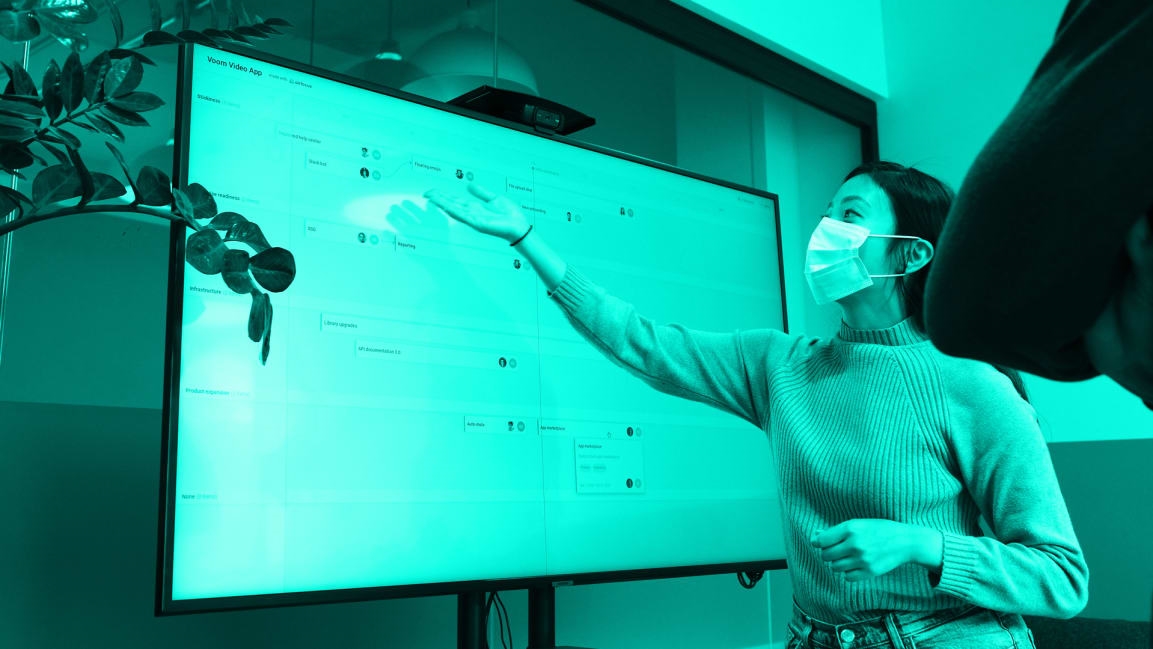3 ways leaders can hold engaging presentations in a hybrid setting
If you want to excel as an influencer, excel at getting your projects approval and establishing the quality that sets you apart, you will have to make three shifts in your mindset.
Calibrating physical movement
The old mindset
You believed that movement was a key to projecting power. You had images of Steve Jobs moving around the stage. You watched your leaders move around the room, directing attention to their PowerPoint, moving back to center, and moving closer to individuals in the room.
So, with all these images of people moving, your impression was that movement is a key to projecting power, and because moving around felt so strong, good, and helped calm your nerves, you eagerly embraced that mindset that movement was the key to projecting power.
The new mindset
You need to embrace the belief that standing still projects authority, and that balance projects strength. You can’t stride around the room and stay on-screen unless you’re in a high-production meeting with cameras following you. Embrace the mindset that remaining still is strong, and balance, whether you’re standing or sitting, projects strength.
To be balanced when seated, sit so that you can move forward, back, or to the side without shifting in your chair. Feel how both sides of your body are in equilibrium. If you’re standing, pay attention to your balance, with your feet shoulder-width apart and try to dip with your knees. Come up slowly from bended knees and feel the balance.
To project presence, focus less on whether you’re standing, sitting, or pacing around, but your balance.
Presenting through slideshows
The old mindset
Before a shift to a hybrid environment, you believed that putting more information on one chart helped command attention and establish your “leadership presence.” You could display multiple perspectives on issues simultaneously. You could highlight key points with a laser pointer or by gesturing with your arm. Beforehand, you could focus attention back to you as a speaker by dropping your arm or turning off your pointer. And besides, having a lot of information on one chart was easier to manage than continuously clicking to the next slide. Yes, you believed that having more on one slide helped keep your audience engaged because you could direct attention from the slide to you, and from you to the slide. You believed having more on one chart could help you command attention.
The new mindset
You need to embrace the belief that less is more. You have to get back to that manual shifting—so going through one idea at a time. Of course, you can highlight your chart if you have advanced technical resources, like a Telestrator that are used on sports broadcasts, but that’s even more complex than shifting out of screen share.
Why can’t you just keep that slide on screen share? Because you get reduced to a small box, or even worse, a voiceover, and your audience gets tired of looking at the same image. As you know from watching TV today, people want faster cuts and faster changes of images. So, looking at the same chart in a multi-mode meeting diminishes your overall presence.
As you prepare your PowerPoint, put one point per slide. Think of it as a less is more opportunity to bring the audience’s focus back to you, keep the audience engaged, and command the multi-mode room.
Managing airtime
The old mindset
You believed that occupying airtime was optional. You were a presence in the room. You had a seat at the table. You believed that you had a presence just by being there. So, you had the choice of how much airtime you occupied. You could choose to speak up only when you felt you had something pivotal to say. You didn’t want to be a blowhard. Your mindset was that you could occupy little airtime and still have a strong presence in the room.
The new mindset
You have to embrace the belief that you need to occupy more airtime. On screen, you disappear when you don’t talk. Of course, you’re still visible. Of course, you’re still in the room or around the table, but if you don’t talk more you disappear from focus. You don’t command attention.
So, rather than wait to add that brilliant insight, you need to add comments that reflect alignment. You need to add suggestions that advance thinking. You don’t want to wait to add a key conclusion. You do need to occupy airtime to establish your engagement with the discussion and to establish yourself as a leader who’s engaged with the issues, listens, adds value to every discussion, and influences.
By embracing these mindset shifts, you will be able to have more impact with people in the room and with people on screen. You will be able to establish your prowess in today’s mixed-modes, and into the future.
(34)



